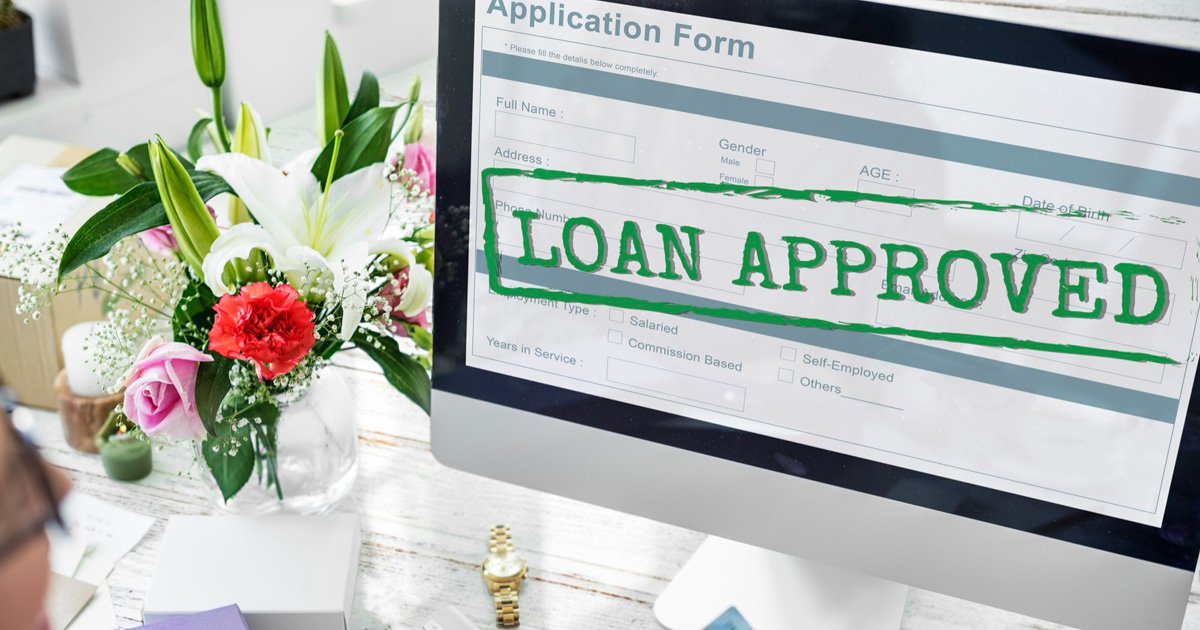Introduction
Traceloans is a relatively new but fast-growing solution in the world of finance. This innovative concept offers a streamlined and transparent approach to lending, making it easier for both lenders and borrowers to navigate the complexities of loans. Whether you’re a business owner seeking funding or an individual needing a personal loan, understanding how Traceloans works can open up a range of opportunities. This article will provide a detailed overview of it, explaining the key concepts, benefits, use cases, challenges, and solutions associated with this technology.
What Are Traceloans?
Traceloans refers to a digital lending platform designed to offer greater transparency, security, and efficiency in the loan process. Unlike traditional loans, which rely on numerous intermediaries, it leverages blockchain technology to create a decentralized system. This approach ensures that all transactions are traceable, recorded, and immutable, reducing the risk of fraud or disputes.
The “trace” aspect of Traceloans refers to its ability to track every stage of the loan process. From application to repayment, each step is recorded on a secure ledger that all parties can access. This transparency fosters trust between lenders and borrowers, making the process more straightforward.
How Do Traceloans Work?
It function using a blockchain-based platform. Borrowers submit loan applications, which are then evaluated by the system based on predefined criteria. Once approved, the loan is issued, and all transactions, including interest payments and repayment schedules, are recorded on the blockchain. The decentralized nature of this system removes the need for intermediaries, lowering costs and speeding up the process.
Key Features of Traceloans
- Blockchain Technology: Provides a secure and transparent ledger for all transactions.
- Decentralization: Reduces reliance on third-party institutions.
- Smart Contracts: Automate agreements and payment schedules.
- Transparency: Enables all parties to track the loan process in real-time.
- Efficiency: Streamlines the lending process, reducing wait times and costs.
Importance of Traceloans in the Financial Sector
Traceloans have emerged as a significant innovation in the financial sector for several reasons. Traditional lending systems are often bogged down by bureaucracy, inefficiency, and high costs. By offering an alternative that is faster, cheaper, and more transparent, it provide clear advantages to both lenders and borrowers.
The Role of Blockchain in Lending
Blockchain plays a crucial role in the Traceloans ecosystem. It ensures that data is not only secure but also accessible to all authorized parties. Since blockchain records cannot be altered once they are made, it eliminates the risk of tampering or fraud. For lenders, this means fewer worries about loan defaults or fraudulent borrowers. For borrowers, it creates a sense of trust and fairness, as all terms are clearly defined and immutable.
Benefits of Traceloans
- Lower Costs: By removing intermediaries, the costs associated with traditional loans are significantly reduced.
- Speed: Platforms process loans much faster than conventional methods, often approving loans in minutes.
- Enhanced Security: Blockchain ensures that all data is encrypted and protected from tampering.
- Greater Access: Traceloans platforms can be accessed by people who may not qualify for loans through traditional banks.
- Improved Transparency: Borrowers and lenders can track every step of the loan process, reducing the chance of disputes.
Real-World Applications of Traceloans
These are becoming increasingly popular in various sectors. Their transparency, speed, and cost-efficiency make them ideal for different use cases.
Business Loans
For small and medium-sized businesses (SMEs), access to funding is often a challenge. Traditional banks require extensive documentation, long approval processes, and high-interest rates. Traceloans offer a more flexible solution. Businesses can apply for loans, get approval quickly, and track every aspect of their loan agreement through the blockchain platform. This streamlined process allows businesses to focus on growth rather than being bogged down by paperwork.
Personal Loans
Individuals seeking personal loans can also benefit from it. Whether they need a loan for a major purchase, medical expenses, or debt consolidation, the transparency and speed of is to provide a hassle-free solution. Personal loan borrowers can rest assured that their data is secure and that the terms of their loan are immutable.
Peer-to-Peer Lending
Traceloans are often used in peer-to-peer (P2P) lending platforms. These platforms allow individuals to lend money directly to others without the need for a bank or financial institution. By using blockchain, P2P lenders can have confidence that their funds are secure and that the loan process is transparent and fair. Borrowers, in turn, can access loans that might otherwise be unavailable through traditional channels.
Microloans
In developing countries, microloans play a crucial role in empowering entrepreneurs. Traceloans platforms make it easier for lenders to offer small loans to individuals in need. By providing a secure, transparent way to issue and track loans, it ensures that these borrowers can access the funds they need without worrying about unfair practices or excessive fees.
Challenges of Traceloans
Despite their numerous benefits, Traceloans are not without challenges. As with any new technology, there are potential obstacles that need to be addressed for widespread adoption.
Regulatory Issues
One of the biggest challenges facing Traceloans is regulatory uncertainty. Blockchain and decentralized finance (DeFi) technologies are still relatively new, and many governments are unsure how to regulate them. This lack of clear regulation can make it difficult for these platforms to operate in certain jurisdictions.
Adoption and Trust
While Traceloans offer a more transparent and efficient alternative to traditional loans, some individuals and institutions are hesitant to adopt new technology. Building trust in a decentralized system takes time, especially for people who are more familiar with conventional banking.
Technical Barriers
Implementing blockchain technology requires a certain level of technical expertise. For smaller lending institutions or individual lenders, setting up a Traceloans platform might be cost-prohibitive due to the infrastructure and knowledge required.
Solutions to Overcome Challenges
While the challenges of Traceloans are real, there are solutions available to address them.
Regulatory Compliance
To tackle regulatory uncertainty, Traceloans platforms can work closely with governments to develop clear guidelines for their operation. By proactively seeking compliance, these platforms can demonstrate their legitimacy and build trust among users.
Education and Awareness
Building trust in Traceloans requires educating both lenders and borrowers. By offering clear, accessible information about how the system works, platforms can help users feel more comfortable adopting this new technology. Tutorials, webinars, and detailed FAQs can go a long way in making people feel more confident in using Traceloans.
Lowering Technical Barriers
As blockchain technology continues to advance, it will become easier and more affordable to implement. Several platforms are already working on solutions that make it simpler for lenders and borrowers to use Traceloans without needing deep technical knowledge. These advances will help drive adoption by reducing the cost and complexity of the system.
The Future of Traceloans
Traceloans have the potential to revolutionize the lending industry. As more people become aware of the benefits of this technology, we can expect to see increased adoption across various sectors. The ability to offer secure, transparent, and cost-effective loans could reshape the way we think about borrowing and lending.
Innovations on the Horizon
Several advancements in blockchain and decentralized finance are likely to enhance Traceloans further. One such innovation is the integration of artificial intelligence (AI) to assess creditworthiness. By using AI to analyze borrower data, Traceloans platforms could offer more accurate and fair assessments, reducing the risk for lenders and making loans more accessible to borrowers.
Another potential development is the expansion of Traceloans into new markets. As regulatory frameworks become clearer and blockchain technology becomes more widespread, we can expect Traceloans to become a global phenomenon.
Conclusion
Traceloans offer a promising solution to the many challenges faced by traditional lending systems. By leveraging blockchain technology, these platforms provide a faster, more transparent, and cost-effective way to issue and manage loans. Whether you’re a business owner, individual borrower, or peer-to-peer lender, Traceloans opens up new opportunities to access and provide financial services.
As with any new technology, there are challenges to overcome. Regulatory uncertainty, adoption hurdles, and technical barriers remain, but solutions are being developed to address these issues. The future of Traceloans looks bright, with innovations and increasing adoption paving the way for a more secure and transparent lending environment.
FAQs
1. What is the main advantage of using Traceloans over traditional loans?
Traceloans offer enhanced transparency, security, and speed due to blockchain technology. This reduces costs and improves the overall efficiency of the lending process.
2. Are Traceloans secure?
Yes, Traceloans utilize blockchain technology, which ensures that all data is encrypted and immutable, reducing the risk of fraud or tampering.
3. Can anyone apply for a Traceloan?
Traceloans are designed to be accessible to a wide range of borrowers, including those who may not qualify for traditional loans. However, specific eligibility requirements vary by platform.
4. How does blockchain enhance transparency in Traceloans?
Blockchain creates an immutable ledger of all loan transactions, allowing both lenders and borrowers to track each step in the process in real-time.
5. What challenges do Traceloans face?
The primary challenges include regulatory uncertainty, trust issues, and technical barriers to adoption. However, solutions are being developed to address these















